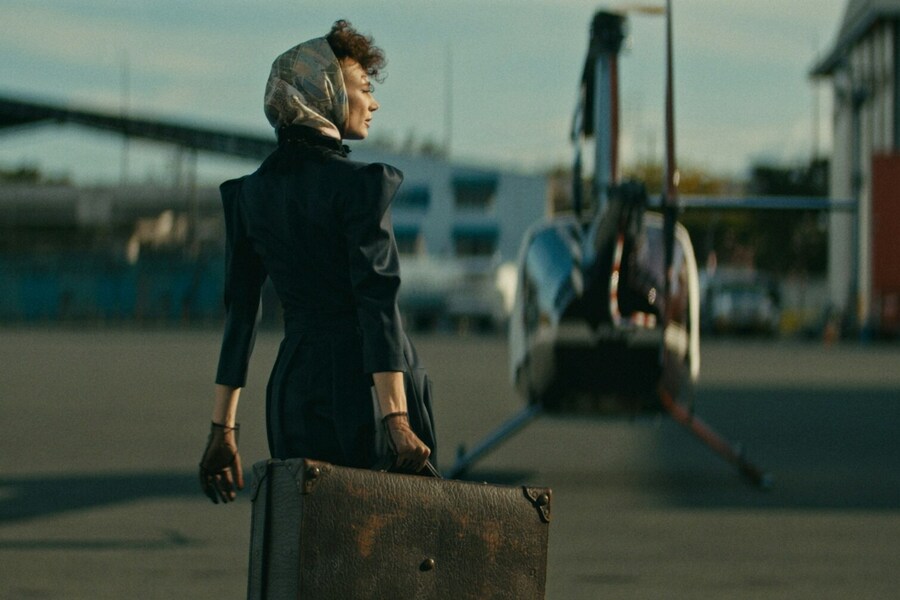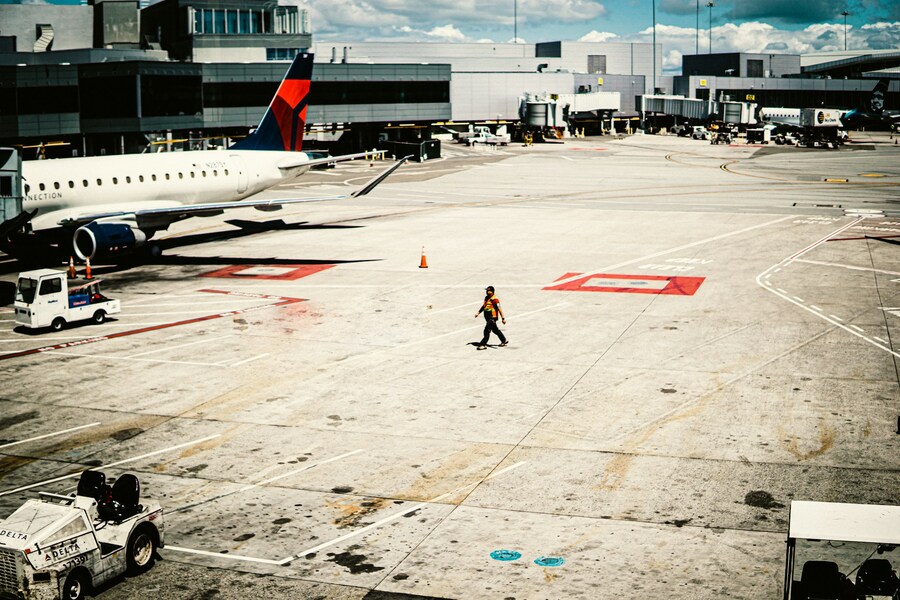Venturing into the world of air travel is a unique experience, a blend of excitement and anticipation. However, for the professionals who navigate the skies as a second home, the experience is a delicate ballet of safety, efficiency, and customer service. Flight attendants are much more than smiling faces offering beverages; they are highly trained safety experts and masters of an in-flight environment that's constantly in flux. They dedicate countless hours – often between 65 to 90 per month – to ensuring a smooth journey for every passenger.
Because their lives are spent within the confines of an aircraft cabin, flight attendants have developed an unparalleled awareness of passenger behaviors. They know what makes a flight proceed without a hitch, and they also know which habits create unnecessary friction and risk. To get an insider's perspective, we spoke with several U.S.-based flight attendants who shared their insights into the most frustrating passenger faux pas. These are the 6 things they universally wish travelers would stop doing so that we can all contribute to a more harmonious and considerate travel experience. By understanding their perspective, we can not only make their jobs easier but also ensure a safer and more enjoyable journey for everyone on board. So, let's get to it!
So, what annoying habits should you leave on the ground?

Source: Dmitry Berdnyk/Unsplash
The moment you step onto a plane, you become part of a temporary community. Like any community, there are unspoken rules and common courtesies that, when followed, make the experience better for everyone. From the pre-flight safety checks to the final descent, every action you take has an impact on the efficiency and safety of the flight. The following are the most common annoyances that flight attendants encounter, and by simply being more mindful of them, you can help make air travel a more pleasant and predictable experience for all.
Overlooking the seat belt reminder
One of the most persistent and dangerous habits flight attendants encounter is passengers who treat the "Fasten Seat Belt" sign as merely a suggestion rather than a command. While it may seem harmless to stand up to stretch or grab something from the overhead bin, this seemingly small act can have serious consequences. As Cate, a Philadelphia-based flight attendant with over a decade of experience, explains, the sign is illuminated for your safety. Unexpected turbulence can occur without warning, and a sudden jolt can send an unbuckled passenger flying, causing serious injury to themselves or others.
Ashleigh, a flight attendant based out of Charlotte Douglas International Airport (CLT), highlights that this behavior is particularly risky during taxiing. "Taxi is one of the most dangerous phases of flight," she says. With her home airport managing over 1,400 arrivals and departures daily, the ground is a hive of activity. Planes are constantly moving, and sudden stops or turns aren't uncommon. Keeping your seatbelt buckled until the aircraft has come to a complete stop and the sign is switched off is a non-negotiable part of ensuring everyone's well-being on the ground, as well as in the air.
Bringing your own booze
It might be tempting to bring your own "liquid courage" on board, but flight attendants say that drinking personal alcohol is one of the most frequently violated rules. The Federal Aviation Administration (FAA) strictly regulates this for all flights on U.S. carriers, and similar rules apply worldwide. Cate notes that this is a rule she has seen broken repeatedly over her career. The key reason for this regulation is simple: altitude affects the body's response to alcohol. What might feel like a single drink on the ground can have a much more significant effect at 30,000 feet, where the lower cabin pressure makes you more susceptible to intoxication.
When passengers sneak their own alcohol, it becomes a dangerous guessing game. Flight attendants, who are trained to monitor passenger behavior and safety, cannot accurately track the amount of alcohol being consumed. This lack of oversight can lead to intoxicated passengers, which creates a safety risk for everyone on board. The rule isn't about control; it's about making sure that every passenger is in a safe and stable condition for the duration of the flight. This includes any alcohol purchased at airport terminals before boarding.

Source: Stella de Smit/Unsplash
Blocking the aisle while boarding
The boarding process is often the most chaotic part of a flight, and flight attendants need passengers to get to their seats as quickly and efficiently as possible. A major frustration is when passengers dawdle in the aisle, blocking the flow of traffic. To help, Cate suggests a simple solution: check your boarding pass before you get on the plane so you know your seat number. Once you reach your row, stow your bags swiftly. "Boarding is the most hectic time of the flight, and in order to get going, everyone has to be seated, and luggage has to be stowed," she says.
Megan, a flight attendant based in Orlando, advises that travelers should have all their in-flight essentials – headphones, tablets, snacks – ready to go before they even step onto the plane. Kaitlyn, another Philadelphia-based attendant, takes it a step further, recommending the use of a packing cube or a smaller bag to keep these items accessible. Her final piece of advice for a smoother boarding experience is to wait until you're fully seated to put your jacket away. This not only saves valuable overhead bin space but also keeps your jacket from touching the often-dirty surfaces of the overhead compartment.
For travelers who have a tight connection and need to get off the plane quickly, a strategy for smooth boarding can also help with an efficient exit. Planning ahead for your entire journey, from securing your spot in the pre-flight parking lot to moving swiftly once on the plane, can make a world of difference. Companies like ParkingNearAirports.io offer a great way to handle the initial leg of your journey, providing options for everything from international airport car parking to daily rates. Securing your spot in advance can help you avoid the stress of searching for a space last minute and often provides parking discounts, allowing you to start your trip on a positive note. Knowing your airport parking charges per day in advance can also help with budgeting.
Chilling in the galley
While flight attendants want you to be comfortable, they need you to respect the galley as their exclusive workspace. The galley is more than just a kitchen; it's a break room, a service station, and the hub of all in-flight operations. "We understand the need to stretch sometimes, but please don't do it in the galley," Cate says. This area is where they prepare meals, store equipment, and have their only moments of rest.
Rachael, a flight attendant from Pittsburgh, agrees that this is a significant pet peeve. It's especially frustrating when passengers are in the galley during a time when the "Fasten Seat Belt" sign is on, as it's dangerous to be up and about during turbulence, takeoff, or landing. Their job requires them to be constantly on the move, and a passenger lingering in their way can obstruct critical tasks and even pose a safety hazard.

Source: Rostyslav Savchyn/Unsplash
Opting for quick layovers
Flight attendants, who spend a great deal of time in airports, understand the logistics of air travel better than most. One piece of advice they consistently offer is to avoid booking short layovers. "If you have a connection, make sure you allow yourself enough time in between flights," Cate says. She warns that anything under an hour is "really risky." Flight delays, unexpected gate changes, and long walks across massive terminals can quickly turn a short layover into a missed flight.
This is especially true for international connections, where you need to account for immigration, customs, and re-screening. Cate recommends at least 2 hours for international layovers and at least an hour for domestic ones. While it might seem convenient to get to your final destination as quickly as possible, a missed connection can cause a logistical nightmare for both you and the airline staff. Giving yourself ample time between flights is a simple way to reduce stress and ensure your journey proceeds smoothly.
Switching seats without permission
While it's natural to want to sit with a travel companion, swapping seats without permission from a flight attendant is a major annoyance. There are several reasons for this. First, some seats – like those with extra legroom or in the front of the cabin – are considered premium and passengers have paid more for them. Moving to one of these seats without permission is not only unfair to other paying customers but can also cause conflicts on board. As Kaitlyn, a flight attendant, points out, "Passengers always want premium seating without paying for it."
Beyond the issue of fairness, there are also critical safety and logistical reasons for assigned seating. "We have weight and balance restraints to comply with as well," Kaitlyn adds. The flight crew uses the seating chart to ensure the aircraft's weight is properly distributed for safe flight. A sudden shift in passenger seating can disrupt this balance, and if a flight attendant asks you to move back to your original seat, it's for a very good reason. Ashleigh emphasizes that they cannot force another passenger to switch seats to accommodate someone who wants to sit with their travel partner. To avoid this situation, it's always best to purchase your desired seat in advance.

Source: Sean Nufer/Unsplash
Conclusion
The simple act of flying can be a marvel of modern technology, but it's the human element that truly defines the experience. By being mindful of the professionals who work tirelessly to ensure your safety and comfort, you can contribute to a better, more efficient, and more pleasant journey for everyone. Whether it's staying buckled up when the sign is on, respecting the galley as a workspace, or simply asking before you switch seats, these small considerations go a long way. Ultimately, a great flight is a collaborative effort between the crew and the passengers. By understanding and respecting the rules of the sky, we can all make air travel a more enjoyable and seamless part of our adventures. So, the next time you board a plane, remember these insights and consider how your actions can help make your journey – and the journey of everyone around you – a little smoother. Happy travels!






